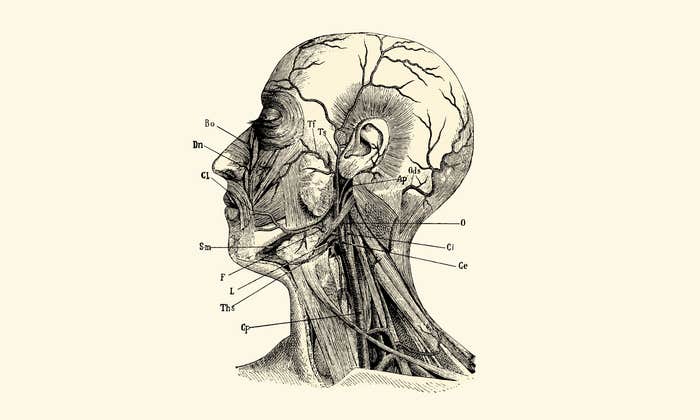How many people could die from a novel coronavirus infection? Of course, no one knows. But just before anyone had a hint of COVID-19, we got an estimate from a panel of health, security, and economic experts: 65 million deaths worldwide within 18 months.
That is a high estimate—likely far too high—from a model with a bunch of assumptions. But it is based on enough solid scientific, political, and business expertise to make you stop wondering why you can’t go to your local restaurant, visit your grandmother in the nursing home, and why there is every reason to be very concerned.
In October 2019, the Johns Hopkins Center for Health Security, the Bill and Melinda Gates Foundation, and the World Economic Forum hosted a pandemic tabletop exercise called Event 201. It simulated the appearance of a novel coronavirus disease that spread from bats to pigs to people. “There is no possibility of a vaccine being available in the first year,” reads a line in the fictional scenario.
The exercise is part of an ongoing effort, notably since 9/11, to prepare for pandemic threats, with reports and policy recommendations that have consumed a lot of time and millions of dollars. Previously the Johns Hopkins Center conducted exercises for the threats of pandemic influenza, a bioterrorist attack, and a smallpox release.
There is no doubt the virus is spreading everywhere.
A novel coronavirus was an obvious choice for the next exercise. Since the SARS outbreak in 2003 and the appearance of Middle East Respiratory Syndrome (MERS)—both coronaviruses—many experts have been warning that coronaviruses along with various influenzas, such as variants of avian flu, represent the greatest pandemic threats to the world.
In Event 201, 15 distinguished business people, government officials, and health experts reacted to the scenario. They predicted accurately much of what we are seeing now, including overwhelmed health facilities, severely disrupted supply lines, and frightening economic collapse. They listed seven recommendations for governments, international organizations, and businesses. Like those from previous reports, they have been mostly ignored.
Soon after the appearance of COVID-19, The Johns Hopkins Center released a statement warning skepticism of the 65 million figure, emphasizing it was in no way a prediction about the current pandemic because “the inputs we used for modeling the potential impact of that fictional virus are not similar to nCoV-2019.”

Modeling a disease outbreak is notoriously difficult. Eric Toner of Johns Hopkins, who directed Event 201, told me, “The model used for the exercise was relatively crude and never intended to do anything other than tee up some discussion in the exercise. Although we have reasonable confidence in the model during the first few months of play, as play continues, the simplicity of the model leads to very large error ranges.”
In fact, the exercise included some assumptions that could make that imaginary pandemic less severe than the current one. It posited that with its imaginary virus, every person would infect only 1.7 others while COVID-19 virus appears to infect 2 to 2.5.
On the mitigating side, Event 201 estimated its imaginary virus to have a mortality rate of 10 percent. The mortality rate estimate for COVID-19 remains in flux. Bodies can be counted but no one knows how many cases, symptomatic or not, there are. A recent report in the journal, The Lancet Infectious Diseases, puts the current estimate of the mortality rate at 5.7 percent.
Another big difference with Event 201 and what we know today is that COVID-19 seems to spare serious symptoms in most children and young adults. The meaning of that in terms of the ultimate number of deaths remains unknown. No one doubts that children can spread the virus. It just seems they don’t get sick.
Event 201 assumed that its virus in people with mild symptoms of the common cold “alarmingly” could infect others—thus passing the disease on before they know they are sick. In this regard, COVID-19 is worse. According to a report out Monday, people in China with undocumented illness were the source of 79 percent of transmissions. Most people got infected from others who felt perfectly healthy.
The third—and perhaps most ominous—aspect of Event 201 is that it spent a lot of time talking about outbreaks in the megacities, such as Sao Paulo, Mumbai, Lagos, Dhaka, and Mexico City, in many of the poorest countries of the world. This is a danger we have not heard much about as the news has focused mostly on China and countries with major resources. “When the disease got into those places,” Toner said, “we could see it would explode.”
There is no doubt the virus is spreading everywhere. On March 11, the World Health Organization reported a total of 47 confirmed COVID-19 cases in nine countries in Africa and 80 confirmed cases in nine countries in South America. It is not difficult to imagine the health systems of many of these countries becoming rapidly overwhelmed. It is happening already in far richer places.
Italy reported 368 deaths on March 15 alone. A recent report in the Journal of the American Medical Association details how in the Lombardy region, the Italian epicenter, just one case on February 20 exploded into a crisis that overwhelmed hospital capacity. The article warns that, “Other health care systems should prepare for a massive increase in ICU demand during an uncontained outbreak of COVID-19.” The same scenario is spreading throughout much of Europe.
Because Europe adapted the WHO testing for cases, it is only about one week behind the actual spread of the disease. Due to the lack of leadership in the United States, this country remains four to six weeks behind. The U.S. tsunami is yet to strike with anywhere near its full force. Hospitals in the U.S. are above 90 percent capacity without any considerations for COVID-19 demands. According to the planners of Event 201, and other experts, we will soon see a surge in demand at U.S. hospitals that is almost impossible to imagine. The potential consequences for the megacities of the global south are, as Event 201 pointed out, even worse.
We don’t know how mitigation efforts in China, other Asian areas, Europe, and the U.S. will affect the course of the pandemic. Our massive pharma and biotechnology industries could find an effective drug any time. In a year or more, there could be an effective vaccine. But most likely, as Event 201 and similar reports and events have been warning, we could see millions die in the meantime.
Event 201 and other pandemic preparedness operations have, for years, been pointing to severe gaps in the health care preparedness of our increasingly growing, interdependent world. This is not likely the last pandemic of this century, probably not of this decade. The greatest message from Event 201 may not be just to shock us into action now, but to heed the warnings seriously in the future.
Robert Bazell is adjunct professor of Molecular, Cellular, and Developmental Biology at Yale. For 38 years, he was chief science correspondent for NBC News.
Lead image: enzoalessandra / Shutterstock


























